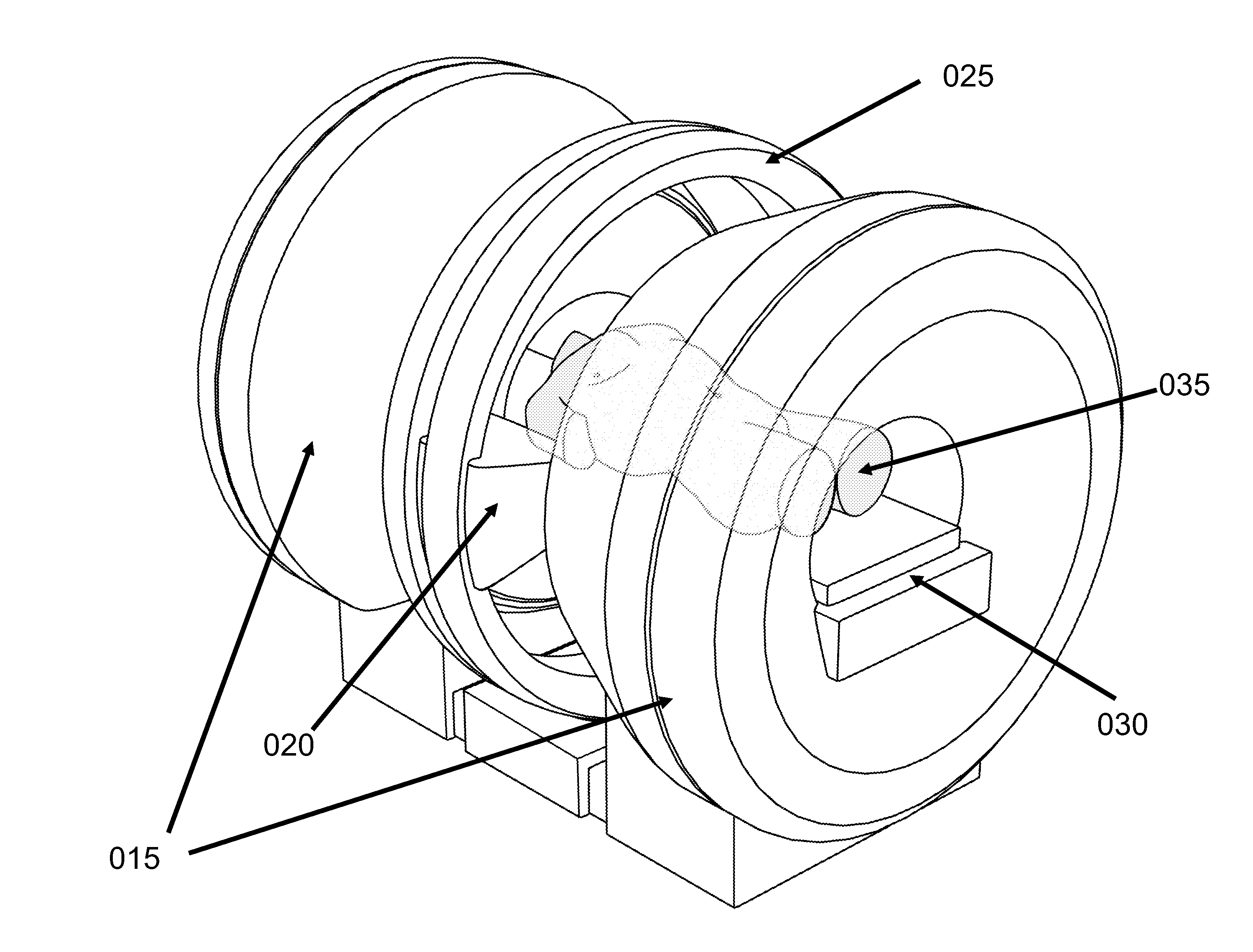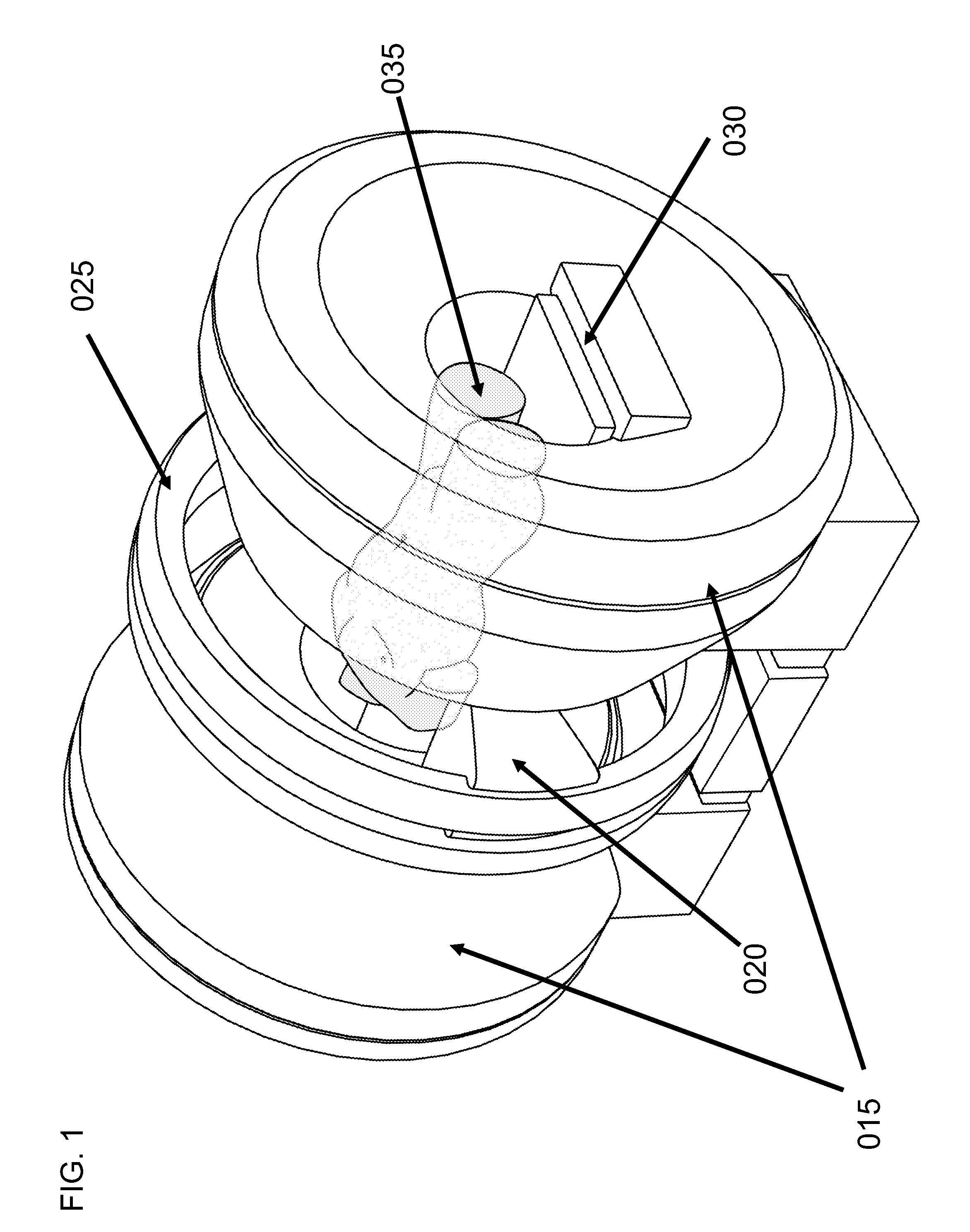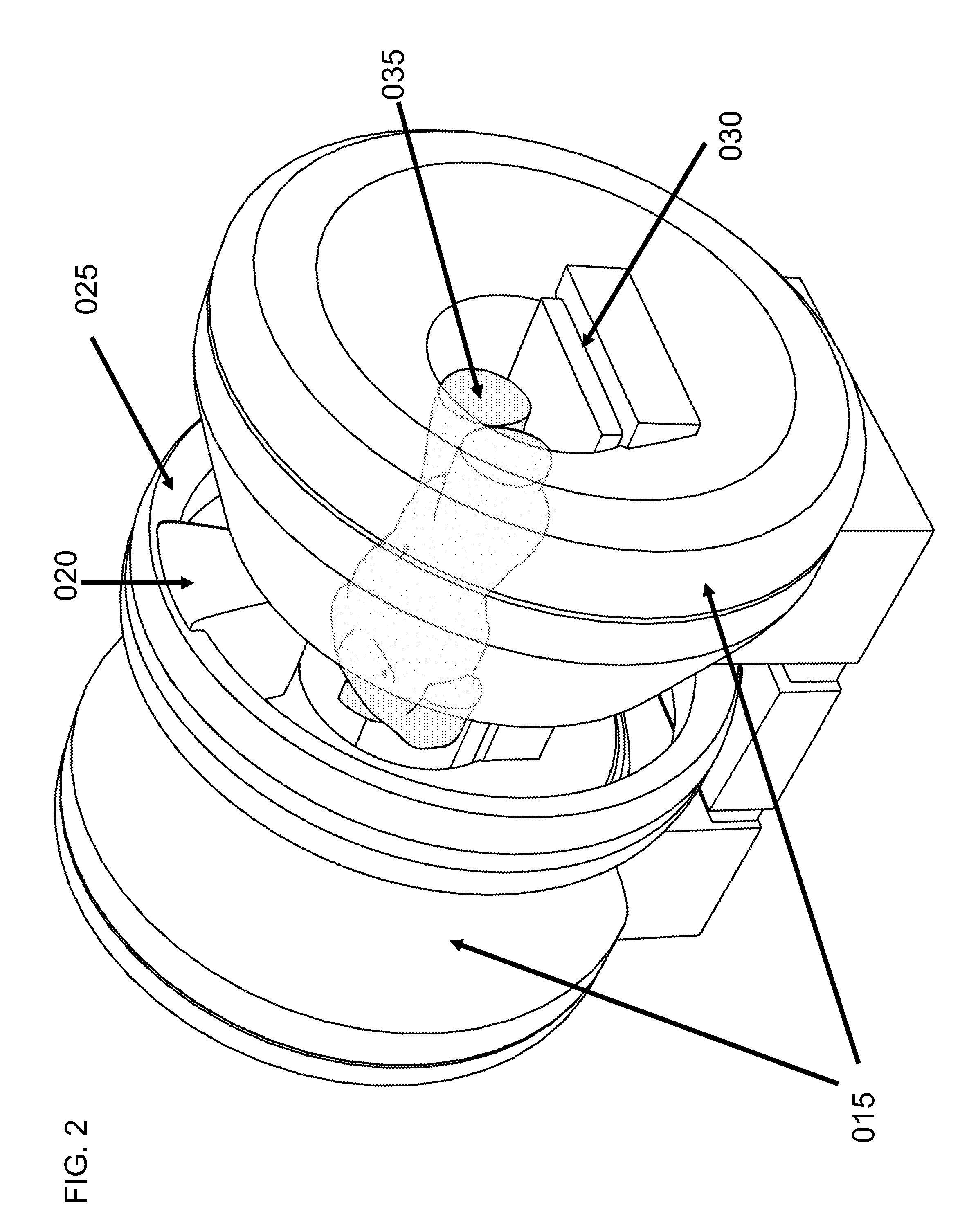Because the known art does not allow for simultaneous imaging and therapy, the patient and all of their internal organs need to be repositioned exactly for accurate
dose delivery.
However, it is known in the art that exactly repositioning the patient even for a single delivery of dose is not possible due to several factors including: the inability to reproduce the patient setup, i.e., the geometry and alignment of the patient's body; physiological changes in the patient, such as
weight loss or
tumor growth and shrinkage; and organ motions in the patients including but not limited to
breathing motion,
cardiac motion, rectal
distension,
peristalsis, bladder filling, and voluntary muscular motion.
Patient setup errors, physiological changes, and organ motions result in increasing misalignment of the treatment beams relative to the radiotherapy targets and critical structures of a patient as the radiotherapy process proceeds.
However, the port films acquired are generally only single 2-D projection images taken at some predetermined interval during the radiotherapy process (typically 1 week).
Additionally, port films do not image
soft tissue anatomy with any significant contrast and only provide reliable information on the bony anatomy of the patient.
Accordingly, misalignment information is only provided at the instants in time in which the port images are taken and may be misleading as the bony anatomy and
soft tissue anatomy alignment need not correlate and change with time.
These procedures are invasive and subject to marker migration.
Even when performed with the
rapid acquisition of many images, it only finds the motion of
discrete points identified by the radio-opaque markers inside a soft tissue and cannot account for the true complexities of organ motions and the dosimetric errors that they cause.
While this technology may account for patient setup errors, i.e., the geometry and alignment of the patient's body, physiological changes in the patient, such as
weight loss or
tumor growth and shrinkage, and inter-fraction organ motions in the patient, such as rectal filling and voiding; it cannot account for intra-fraction organ motions in the patients.
Furthermore, reduction in overall treatment volume may allow dose escalation to the target, thus increasing the probability of
tumor control.
The
cobalt unit was quite simplistic and was not technically improved significantly over time.
The linac was the more technically intensive device.
When the value of
cobalt therapy was being weighed against the value linac therapy,
radiation fields were only manually developed and were without the benefit of IMRT.
However, there is a fundamental flaw in our currently accepted paradigm for dose modeling.
The problem lies with the fact that patients are essentially dynamic deformable objects that we cannot and will not perfectly reposition for fractioned radiotherapy.
The real problem lies in the fact that outside of the cranium (i.e., excluding the treatment of
CNS disease using
Stereotactic radiotherapy)
radiation therapy needs to be fractionated to be effective, i.e., it must be delivered in single 1.8 to 2.2 Gy fractions or double 1.2 to 1.5 Gy fractions daily, and is traditionally delivered during the work week (Monday through Friday); taking 7 to 8 weeks to deliver a curative dose of 70 to 72 Gy at 2.0 or 1.8 Gy, respectively.
While significant physiological changes in the patient do occur, e.g., significant tumor shrinkage in head-and-neck
cancer is often observed clinically, they have not been well studied.
. . it is incontestable that unacceptably, or at least undesirably, large motions may occur in some patients .
However, the prior art cannot account for intra-fraction
organ motion which is a very significant form of organ motion.
The prior art cannot capture intra-fraction organ motion and is limited by the speed at which
helical or cone-beam
CT imaging may be performed Secondly, but perhaps equally important,
CT imaging adds to the
ionizing radiation dose delivered to the patient.
Concerns over increased secondary
carcinogenesis due to whole-body dose already exist for IMRT and become significantly worse with the addition of repeated
CT imaging.
The significant difficulty with integrating a MRI unit with a linac as opposed to a CT imaging unit, is that the
magnetic field of the MRI unit makes the linac inoperable.
The high radiofrequency (RF) emittance of the linac will also cause problems with the RF
transceiver system of the MRI unit, corrupting the signals required for image reconstruction and possibly destroying delicate circuitry.
The integration of a linac with a MRI unit is a monumental
engineering effort and has not been enabled.
The effectiveness of conventional
radiation therapy is limited by imperfect targeting of tumors and insufficient radiation dosing.
Because of these limitations, conventional radiation may
expose excessive amounts of
healthy tissue to radiation, thus causing negative side-effects or complications.
It is well know that the accuracy of conformal
radiation therapy is significantly limited by changes
in patient mass, location, orientation, articulated
geometric configuration, and inter-fraction and intra-fraction organ motions (e.g. during
respiration), both during a single delivery of dose (intrafraction changes, e.g., organ motions such as rectal
distension by gas, bladder filling with
urine, or thoracic
breathing motion) and between daily dose deliveries (interfraction changes, e.g., physiological changes such as
weight gain and
tumor growth or shrinkage, and patient geometry changes).
 Login to View More
Login to View More  Login to View More
Login to View More 


